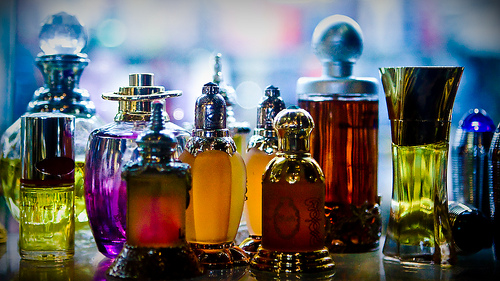Cosmetics are not a modern invention. Humans have used various substances to alter their appearance or accentuate their features for at least 10,000 years, and possibly a lot longer.
Women in Ancient Egypt used kohl, a substance containing powdered galena (lead sulphide – PbS) to darken their eyelids, and Cleopatra is said to have bathed in milk to whiten and soften her skin. By 3000 B.C men and women in China had begun to stain their fingernails with colours according to their social class, while Greek women used poisonous lead carbonate (PbCO3) to achieve a pale complexion. Clays were ground into pastes for cosmetic use in traditional African societies and indigenous Australians still use a wide range of crushed rocks and minerals to create body paint for ceremonies and initiations.
Today, cosmetics are big business. According to the 2011 Household Expenditure Survey, conducted every five years by the Australian Bureau of Statistics, Australians spend around $4.5 billion on toiletries and cosmetic products every year. Cosmetic advertising, previously directed mainly at women, is now targeting a wider audience than ever. Read more
